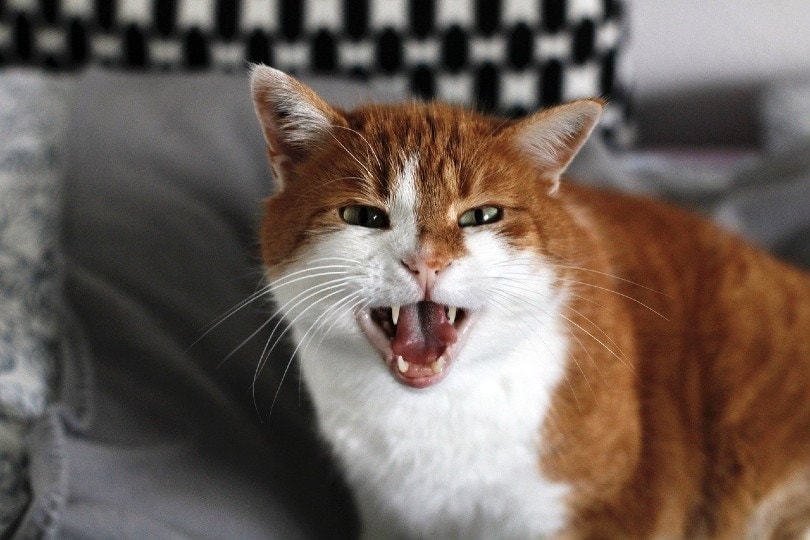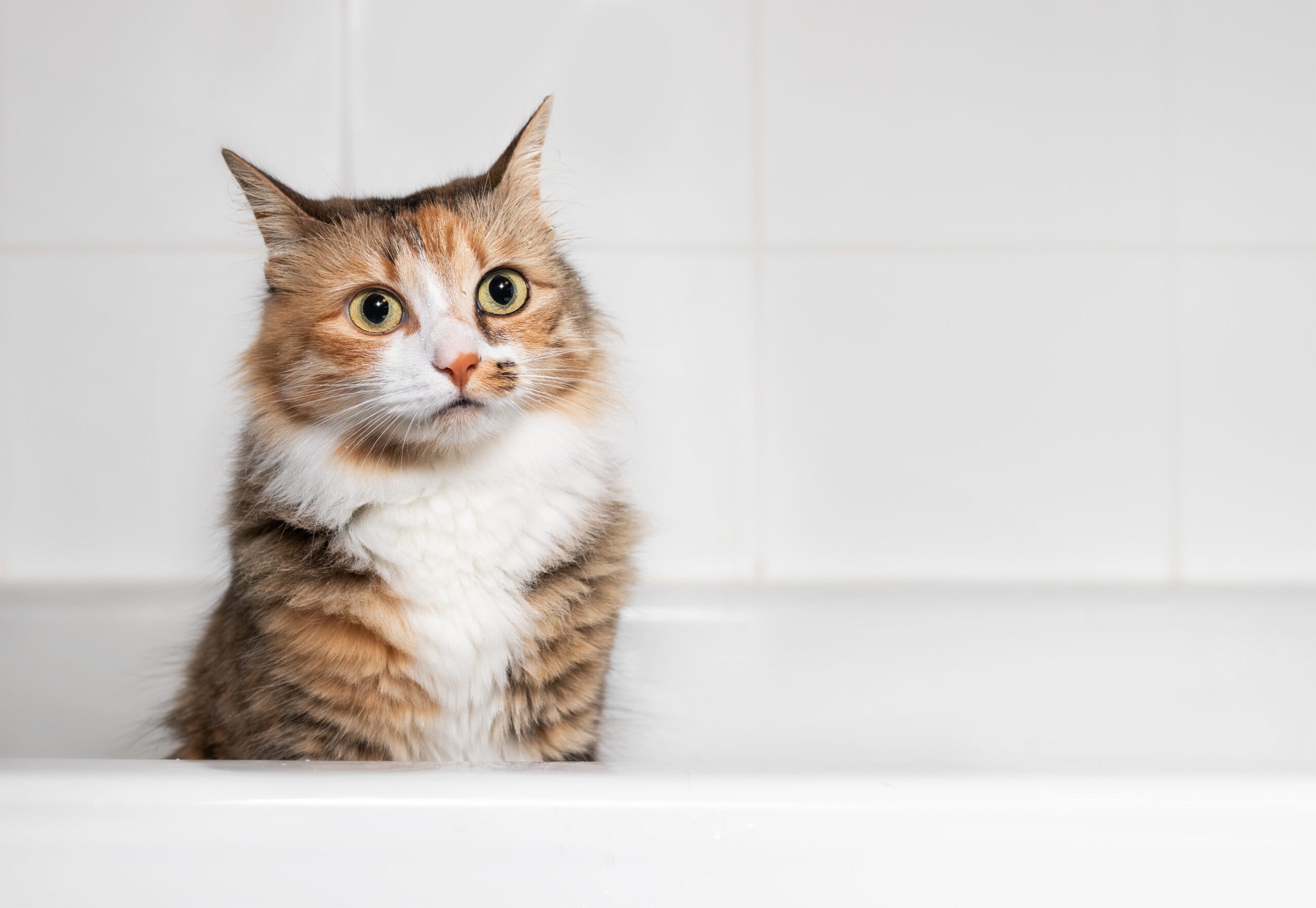Play With Your Cat the Right Way: 8 Vet-Reviewed Mistakes to Avoid

Updated on

Some cats always seem to be in touch with their inner kitten. Everything is a toy, whether it is supposed to be or not. Just try giving your kitty a cardboard box. It is a great stress reliever for them, not unlike a feline version of bubble wrap. Some pets are more playful than others. For example, the Persian is a pretty chill breed compared to the antics of the Bengal.
Believe it or not, there is a right and a wrong way to engage your kitty. Knowing the breed’s personality is an essential step to making the most of playtime. However, several other things are vital to understanding its importance and getting the most out of your time together. It begins with understanding what purpose this activity serves.
The Role of Play
The energy of a kitten is unmistakable. It seems like they can play for hours! Its role is not unlike that of dogs or even people. It is a vital part of growing up that teaches cats the life skills they will need to survive. Play provides valuable lessons in hunting, chasing down prey, and fighting off competitors. Like puppies, kittens may jockey for position in the litter. It doesn’t matter if your kitty will ever leave their home, either.
Playtime for your pet serves other purposes, too. It can relieve boredom for an indoor cat or one without any feline companions. That can provide vital mental stimulation and exercise to prevent obesity. It is also essential to bond with your cat. Shared experiences make your relationship with your kitty stronger. Finally, it lets your cat be a cat.

Mistakes to Avoid
We discussed personality differences between various breeds. Presumably, you chose your cat because of something that you liked about their disposition. That’s an excellent starting point for getting the most out of playtime. However, there are times when it’s not appropriate for a variety of reasons. Understanding your pet can help you avoid these mistakes that can affect your relationship.
1. Not Reading the Signs

Cats do an excellent job of conveying their feelings. You know when they are happy and active by the upright position in which they hold their tails, their relaxed faces, and their pointed ears. You know when they are playful when they attack a toy out of the blue. You probably also are well aware of the signs of a pet that is less than pleased, whether it’s because of a puppy bothering them or a child trying to hold them too tight.
Not reading these signs is a big no-no when it comes to playing with your cat the right way. Felines usually give you a warning when things have crossed the line. It may start with slapping their tails. They may pull away or even swat at your hand. These actions are often followed by unmistakable signs of displeasure with hissing, spitting, or growling. If that happens, leave your pet alone.
2. Finger Play
This mistake is more like advice for you than anything else. A fake squirrel filled with catnip is a toy; your hands or fingers are not. Don’t make yourself a part of your pet’s toy chest. Remember what those claws can do to a scratch post and your furniture. They can shred your skin just as easily. It’s one door that you don’t want to open because a cat won’t let you shut it.
3. Bad Timing

Cats are not unlike people in that they aren’t necessarily ready for a rousing game of fetch or up to a chase when they just wake up from a nap. Felines can sleep a long time, sometimes up to 18 hours. They’re more likely to be cranky after a long rest. Do both of you a favor and wait until your cat is fully awake before breaking out the teaser toy.
4. The Long Haul
Any pet owner will tell you that cats and dogs are remarkably persistent when it comes to playing. They like to have fun just like you do. If you are going to start the game, be ready to stick with it for the long haul. Your kitty will. Plan on four 10-minute times a day to give your cat the mental stimulation they need without tiring your arms from tossing a ball down the hall a million times.
5. Boredom
Cats are intelligent animals. They have to be so they can hunt and survive. One of their amazing adaptations is to dismiss things that have run their course or that they’ve decided are no longer fun. The toy that they once couldn’t leave alone sits unused, gathering dust. That’s the telltale sign of a bored cat. That’s why you should switch out their toys now and again. Two weeks later, it’ll seem brand new.
If your cat needs a great toy to get the playing started, we recommend our Hepper Catnip Stick Toy. These sturdy, dual-layer sticks are hand-made in the USA and filled with 100% organic catnip. Choose from a fun range of pastel colors and give your cat hours of playtime!
6. Getting Rough

If you watch two cats or dogs roughhousing, you know how it is going to play out in the end. The chasing and running around start out fun, but then it takes an ugly turn. Our pets match the intensity of their playmates—even you. It’s a smart idea to remember an adage from the schoolyard. Don’t dish it out if you can take the payback. If you play rough, your cat will too.
7. Scary Stuff
Felines are amazing animals just for the ability to jump. Sometimes, they do it for fun when they get in a mood. Other times, it helps them hunt and snag their prey. They will also leap away from any danger since they can move a safe distance from the threat. However, that’s not an excuse to scare a cat or any pet purposely. We think that it’s cruel and mean to scare any animal just for a laugh.
8. No Reward
We are also not a fan of playing with toys that have no reward. Chasing a catnip mouse is fun if your pet eventually catches it. Going after the beam from a laser pointer is not.
Undoubtedly, your cat will follow the light and bounce on it. The lack of a reward takes away your kitty’s enjoyment. Save the laser pen for your next PowerPoint presentation at work and play fair with your cat.
Tips for Better Playtime
The most important thing about playtime is that you make it happen. Remember that it’s also a learning opportunity to manage negative behaviors and replace them with positive ones. Think of it as cat therapy. If your pet bites or acts inappropriately, it’s time to stop the game and go into a timeout. Your kitty will soon learn what they should and shouldn’t do. After all, most cats just want your love.
Final Thoughts
There’s no doubt that play is a vital part of a cat’s life, from kitten to adult. It teaches them the skills they’ll need to survive in the wild or your home. It’s also an excellent way to bond with your pet. However, as you’ve seen, there are right ways and wrong ways to do it.
Understanding your cat is an excellent way to learn how play can fit into your relationship. It’s vital for your kitty’s mental health.
See also:
Featured Image Credit: Dora Zett, Shutterstock















